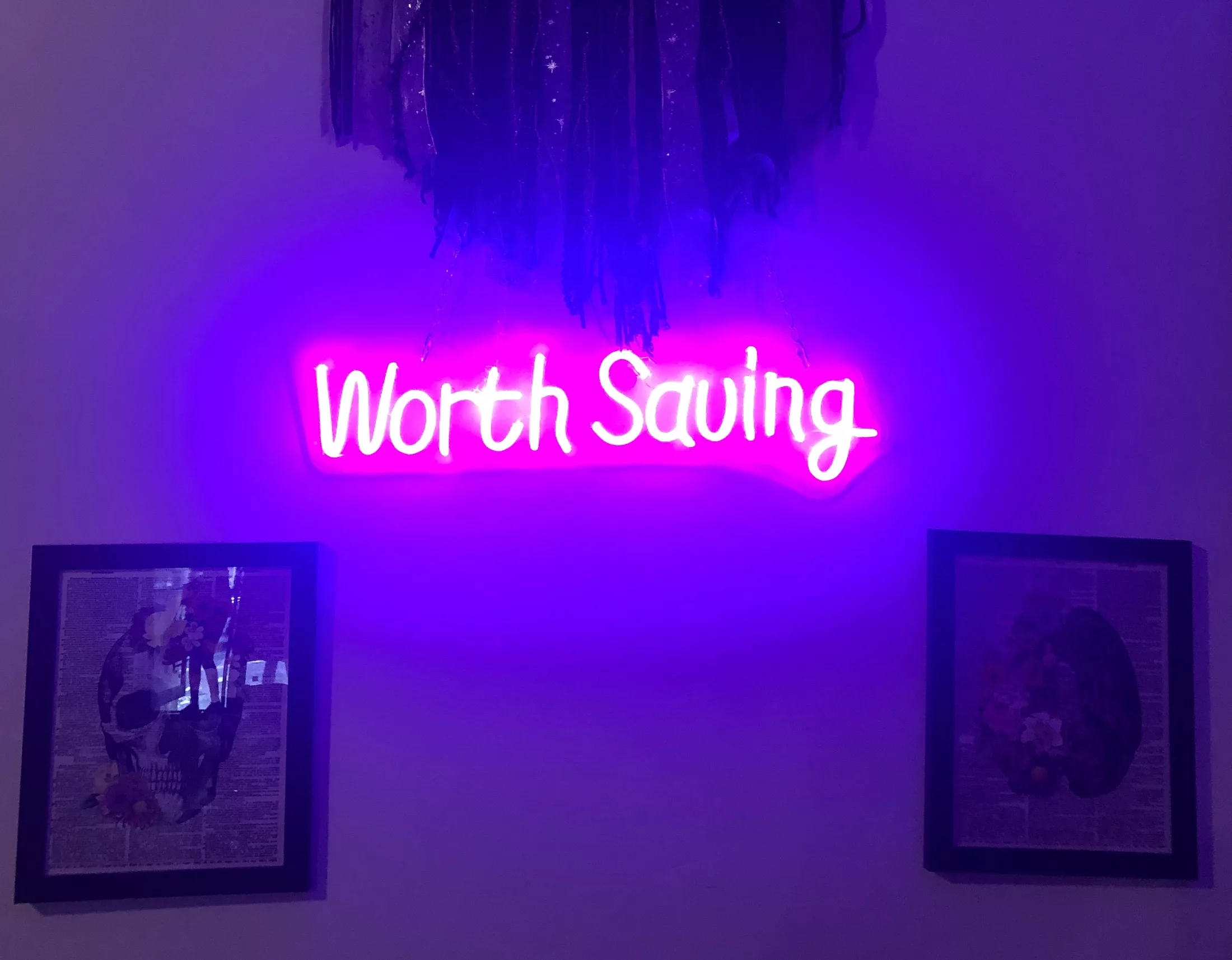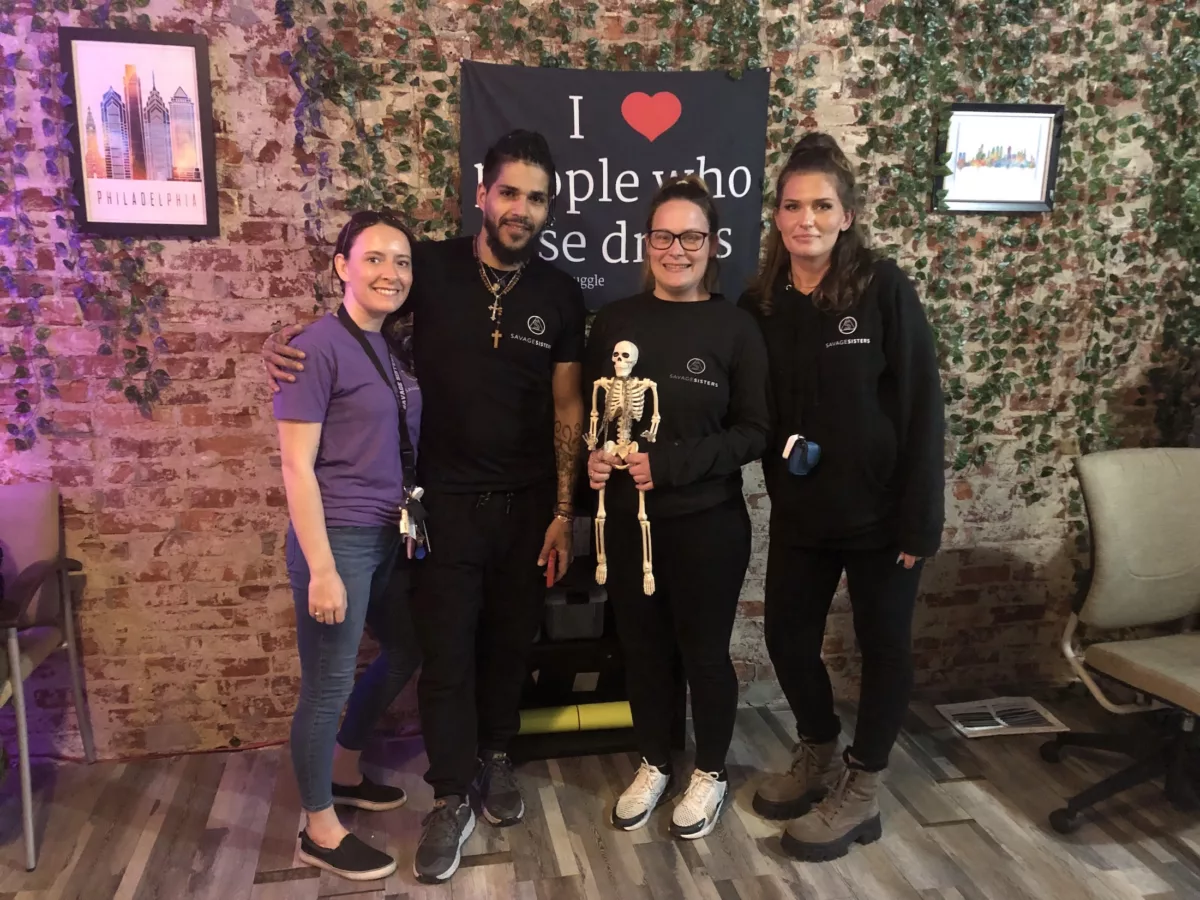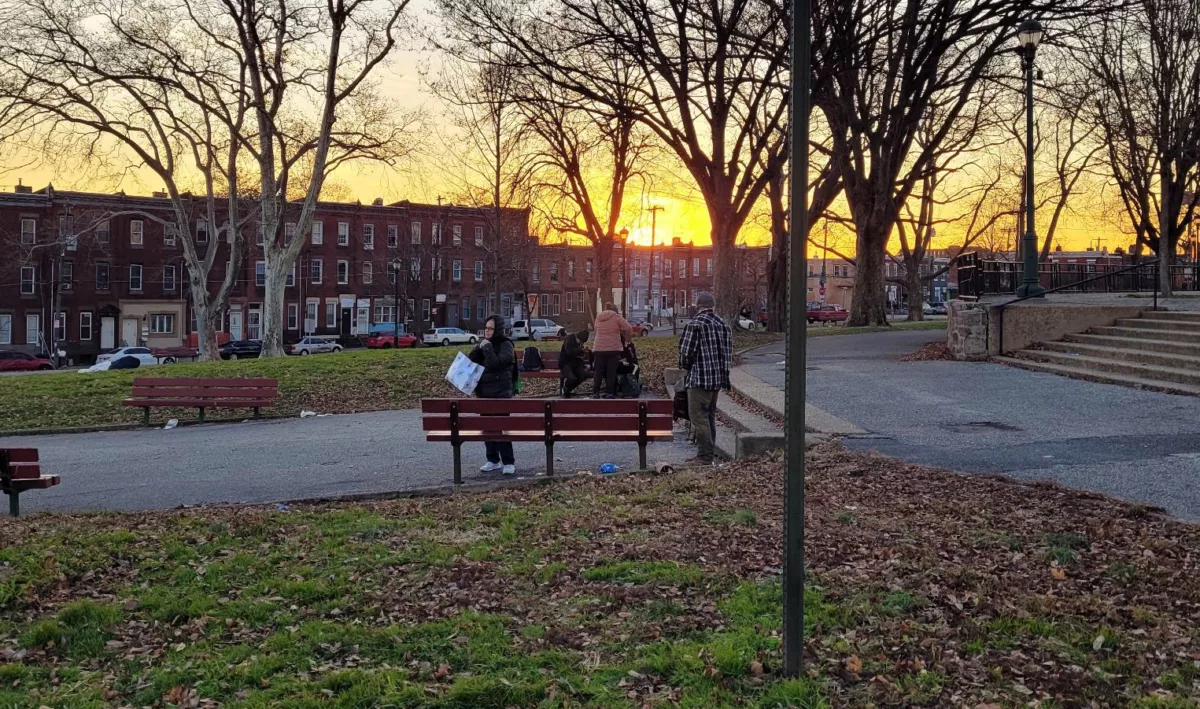Drug War Tactics Won’t Stop Xylazine Deaths
Instead, harm reduction advocates are calling for strategy to create a safer supply of currently criminalized drugs.

Over the past six months, national and local media have flooded the news cycle with stories about the “horrors” of xylazine, a non-opioid animal tranquilizer increasingly found mixed with fentanyl, sometimes to deadly effect. Outlets including the New York Times and CNN have trafficked in graphic portrayals of xylazine use, even calling it “the zombie drug,” a term advocates say fuels stigma and punitive measures against people who use drugs.
Indeed, amid this wave of sensationalized coverage and broader concerns that xylazine is driving up overdose rates nationwide, lawmakers have responded by rushing to criminalize possession of the drug. But critics fear the current push against xylazine is repeating the cycle that led to its rise.
Four states, Florida, West Virginia, Ohio, and Pennsylvania, have already added xylazine to their lists of controlled substances. Proposed legislation in the U.S. House of Representatives and Senate would criminalize some xylazine possession at the federal level and increase funding for law enforcement to “crack down on its spread,” in the words of one of the bill’s sponsors.
This official response to xylazine mirrors tactics that have been used for decades in campaigns against emerging “drugs of concern.”
Most recently, in 2018, the Trump administration used its emergency authority to move many fentanyl-related substances into Schedule I. The policy triggered harsh punishments for minor possession—even in cases in which someone does not know their drugs contain fentanyl. The resulting penalties have disproportionately impacted Black and Latino communities. In 2021, roughly 40 percent of those arrested for fentanyl possession were Black, and around 40 percent were Latino.
While officials claimed emergency scheduling was necessary to combat fentanyl overdoses, deaths have only continued to skyrocket in the years since, reaching record highs as recently as 2021.
In light of this track record, harm reduction advocates say the recent approach to xylazine is little more than a symptom of the latest “drug panic,” likely to worsen the overdose crisis and deepen the inequities of drug arrests and incarceration.
Instead, some are advocating for a strategy known as “safe supply,” which involves providing people who use drugs with access to substances of regulated contents and potency.
Safe supply may seem like a foreign concept in the U.S., where a half-century-long war on drugs has unsuccessfully pushed abstinence. But supporters argue that protecting people against unknowingly using adulterated drugs is a key step in combating overdoses related to xylazine and other additives.
Like other harm reduction tactics, safe supply “is fundamentally about saving lives,” said Melanie Beddis, the programs director at Savage Sisters Recovery, a Philadelphia-based nonprofit that serves people who are in recovery or using drugs.
She noted that the approach relies on a basic concept widely accepted in other drug use contexts.
“Safe supply already exists in bars,” Beddis told The Appeal. “People are able to go into a place, order what they want, and know the ingredients and what they’re drinking.”

Xylazine has hit Philadelphia especially hard. The tranquilizer was present in over 90 percent of street opioid samples seized in the city in 2021, according to a recent report.
While most news outlets have only recently begun covering xylazine, the tranquilizer was first identified in Philadelphia’s illicit opioid supply in 2006. Savage Sisters has been “raising the alarm about xylazine” since 2018, the year after overdoses involving the drug started to rise, according to Sarah Laurel, the organization’s founder and executive director.
“Once we found out what was in the supply, it was too late because individuals were already chemically dependent on it,” Laurel told NPR in April.
Last year, Savage Sisters opened a drop-in center in Kensington, offering a variety of resources for safer drug use and an accepting space to rest or access support. Visitors can pick up overdose prevention supplies—including xylazine test strips—grab snacks and clean clothes, receive medical care, or take a hot shower.
Beddis, who helps operate the drop-in center, joined Savage Sisters as programs director in September 2022 after her own struggles with opioids. She said that safe supply would have been helpful on her journey through substance use disorder and recovery.
“I put myself in dangerous situations to come up with the money for my drugs,” Beddis said. “If it was looked at more like a disease and I was going somewhere to get my treatment, then maybe it would have been easier to reach out for help when I was ready to stop.”
Stigmatization of drug users has been an animating feature of drug scares throughout U.S. history dating back to the 19th-century temperance movement, according to Craig Reinarman, a professor emeritus at the University of California, Santa Cruz, who has written extensively about drug law and policy. The use of “dehumanizing, fear-driven, and context-free” language in these campaigns—sometimes down to the exact same words—has historically fueled government-led crackdowns that harm users, he said.
“When people are dehumanized, they’re more likely to be treated punitively, rather than receiving services,” Reinarman told The Appeal.
In the 1930s, the head of the now-defunct Federal Bureau of Narcotics claimed that cannabis reduced the brain to a “storehouse for horrid specters.” That rhetoric set the stage for the passage of the Marijuana Tax Act in Congress, the first cannabis criminalization regime in the U.S. At the height of the crack epidemic in 1986, CBS News dedicated a prime-time segment to depicting the “hands-on horrors” of crack cocaine. Soon thereafter, federal lawmakers enacted an extreme sentencing law that created a notorious 100-to-1 disparity for crack and powder cocaine—treating possession of 5 grams of crack the same as 500 grams of powder cocaine.
In 2012, media outlets around the world ran stories about the so-called Miami Zombie, in reference to a man who had bitten another man’s face, purportedly while under the influence of a category of synthetic drugs known as bath salts. Subsequent testing revealed that the suspect did not have those substances in his system at the time of the attack.
Harm reduction advocates say this type of uncompassionate, enforcement-first response fails to deter drug use, and often only increases overdoses by making the drug supply more potent or toxic.
“The policy choices we make in terms of drugs to ban actually dictate what happens in the [illicit] market,” said Sheila Vakharia, deputy director of research and academic engagement at the Drug Policy Alliance. “As soon as a new drug hits the market, policymakers want to crack down on it. And then it’s a game with suppliers and manufacturers and distributors to make sure that [substitutes are] different enough to avoid harsh penalties and sentences.”
In that way, Vakharia argues, the proliferation of xylazine in the opioid supply was a predictable result of Trump’s crackdown on fentanyl analogues—a policy Congress has since extended under the Biden administration. But instead of adjusting their response based on past failures, policymakers are once again making the same mistakes.
“The lack of safe supply is why we’re facing the problems with xylazine,” Beddis said.
“The lack of safe supply is why we’re facing the problems with xylazine.”
Melanie Beddis Programs Director at Savage Sisters Recovery
Safe supply may represent a major departure from U.S. drug policy, but models implemented in Europe and Canada indicate the approach can help prevent overdoses by reducing patients’ engagement with the illicit drug market, where substances are significantly stronger and often contaminated by adulterants like fentanyl or xylazine.
In British Columbia, health officials have rolled out a program to prescribe people with opioid dependence regulated medication dispensed at intervals and in doses established by their doctor.
Mark Tyndall, a physician and former head of the British Columbia Centre for Disease Control, became a staunch supporter of safe supply after working in overdose prevention sites, where people can bring in drugs to use in the presence of staff who are trained to reverse overdoses. These sites give people a safer place to use while working to connect clients to resources like housing, job training, and medical care. But they don’t distribute drugs.
“It just seemed crazy to have people walk in with street drugs knowing that they were going to go down and then rushing and giving them oxygen and naloxone,” Tyndall told The Appeal.
Tyndall said he’s seen patients’ quality of life improve with consistent access to prescription opioids—in this case, hydromorphone.
British Columbia’s safe supply program drew controversy this month amid reports that participants were selling prescription hydromorphone on the streets. Tyndall said there was only isolated evidence of diversion. Even in those cases, he argued the model was fulfilling a harm reduction goal.
“About 80 percent of my patients tell me they’ve never sold or given away their prescription,” Tyndall said. And even when they do, “it’s to other people who are buying fentanyl on the street anyway. So exactly what we’d like [patients] to do is give it to others so they don’t die.”
To Tyndall, criminalization represents an “upside down” approach to helping people who use drugs access housing, employment, and other forms of stability.
“All that starts happening once people have a secure supply of drugs,” Tyndall said. “They continue to use drugs, but they can start to get everything else in order because they’re not spending their days hustling for drugs and hiding from the police.”
In Philadelphia, however, some harm reduction advocates and people who use drugs have expressed their own skepticism about a prescription-based safe supply model.
Sky, a woman who uses drugs in Kensington and whose name has been changed to protect her identity, said she worries a prescription safe supply program would mirror the privatized approach to insulin, which is typically sold at high prices that generate massive profits for pharmaceutical companies at the expense of vulnerable patients.
Sultana, an organizer with the Kensington-based harm reduction collective Project SAFE who also chose not to use her legal name, voiced concern that state-run safe supply programs could give the government and the medical system more power to surveil and control people who use drugs.
A handful of community-led safe supply initiatives have also emerged in the face of broader hesitation from both government officials and people who use drugs.
In British Columbia, a community coalition called the Drug User Liberation Front (DULF) works with other local groups to run a Compassion Club that distributes heroin, cocaine, and meth to individuals at high risk of overdose. Club administrators purchase the drugs with funds from a sustaining donor campaign and test the supply before distribution. Although the Compassion Club’s operations are not legal, the Vancouver City Council passed a motion in 2021 officially commending the group’s efforts.
Although evidence suggests harm reduction programs are most effective when they are led by people who have firsthand experience of drug use, organizers in the U.S. would undoubtedly face severe risks in attempting to implement such a safe supply model. Even interventions like syringe exchanges and the distribution of drug testing strips remain criminalized in many parts of the country, despite ample evidence of their effectiveness.
“Safe supply in the United States is going to be a longer timeline,” Vakharia acknowledged.

Still, there are plenty of harm reduction alternatives to the enforcement-first, abstinence-based response officials are taking toward xylazine.
Vakharia emphasized strategies such as overdose prevention sites, drug decriminalization, and equitable access to drug checking equipment, which she said could both mitigate harms and serve as “intermediary steps” toward a world in which safe supply feels more feasible.
In Beddis’s work at Savage Sisters, she sees a lot of public opposition to the broader concept of harm reduction.
Over the past year, Beddis said, she’s done around 30 media interviews about xylazine and drug use in Kensington and mentioned safe supply in every one of them. But outlets have never printed those quotes, an outcome she attributes to stigma and closed-mindedness around drug policy.
“People are so quick to throw around the word ‘enabling’ when it comes to harm reduction, getting clean needles, even giving out peanut butter and jelly sandwiches to people in Kensington,” she said. “When I was using, whether I had a clean needle or something to eat, I would’ve been out there until I was ready to stop.”
Beddis said that respecting people’s agency and honoring each person’s individual needs is part of what makes safe supply so crucial.
“If you just look at all the hundreds of thousands of lives we’ve lost to overdoses with fentanyl and xylazine, if we had safe supply, the vast majority of those people would still be with us,” Beddis said. “Why would you be against saving someone’s life?”
